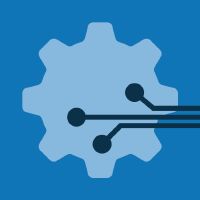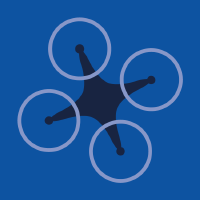Topic Menu
► Topic MenuTopic Editors


Civil and Public Domain Applications of Unmanned Aviation
Topic Information
Dear Colleagues,
Unmanned systems have witnessed unprecedented levels of growth during the past decade. Although military applications have dominated the field for years, there is a major shift to civil and public domain applications in which aerial platforms are used across a wide spectrum of diverse applications in urban and rural areas. This Topic focuses on civil and public domain applications and on the societal impact of unmanned aviation and its effect on everyday quality of life. Although the technical challenges cover a wide spectrum of topics, of particular importance are the following topics:
- bioinspired aerial platforms;
- hybrid platforms;
- design resiliency;
- human factors;
- the framework and regulations for integration into the national air-space.
Submitted papers will include, but are not be limited to, extended versions of accepted conference papers in ICUAS 2024, which will be held on 4–7th June, Chania, Crete, Greece. The maximum percentage of overlap will be 30%. Authors must reference the corresponding conference papers. The extended version of the accepted conference papers in ICUAS 2024 will enjoy a 20% discount on the Article Processing Charge.
Prof. Dr. Hyoun Jin Kim
Dr. Giuseppe Loianno
Prof. Dr. Didier Theilliol
Prof. Dr. Nikolaos Tsourveloudis
Prof. Dr. Kimon P. Valavanis
Dr. Nikolaos Vitzilaios
Topic Editors
Keywords
- unmanned aviation
- unmanned aircraft systems
- resiliency
- autonomy
- aerial platforms
- multirobot teams
Participating Journals
| Journal Name | Impact Factor | CiteScore | Launched Year | First Decision (median) | APC |
|---|---|---|---|---|---|

Aerospace
|
2.1 | 3.4 | 2014 | 21.3 Days | CHF 2400 |

Automation
|
- | 2.9 | 2020 | 24.1 Days | CHF 1000 |

Drones
|
4.4 | 5.6 | 2017 | 19.2 Days | CHF 2600 |

Electronics
|
2.6 | 5.3 | 2012 | 16.4 Days | CHF 2400 |

Remote Sensing
|
4.2 | 8.3 | 2009 | 23.9 Days | CHF 2700 |

MDPI Topics is cooperating with Preprints.org and has built a direct connection between MDPI journals and Preprints.org. Authors are encouraged to enjoy the benefits by posting a preprint at Preprints.org prior to publication:
- Immediately share your ideas ahead of publication and establish your research priority;
- Protect your idea from being stolen with this time-stamped preprint article;
- Enhance the exposure and impact of your research;
- Receive feedback from your peers in advance;
- Have it indexed in Web of Science (Preprint Citation Index), Google Scholar, Crossref, SHARE, PrePubMed, Scilit and Europe PMC.


